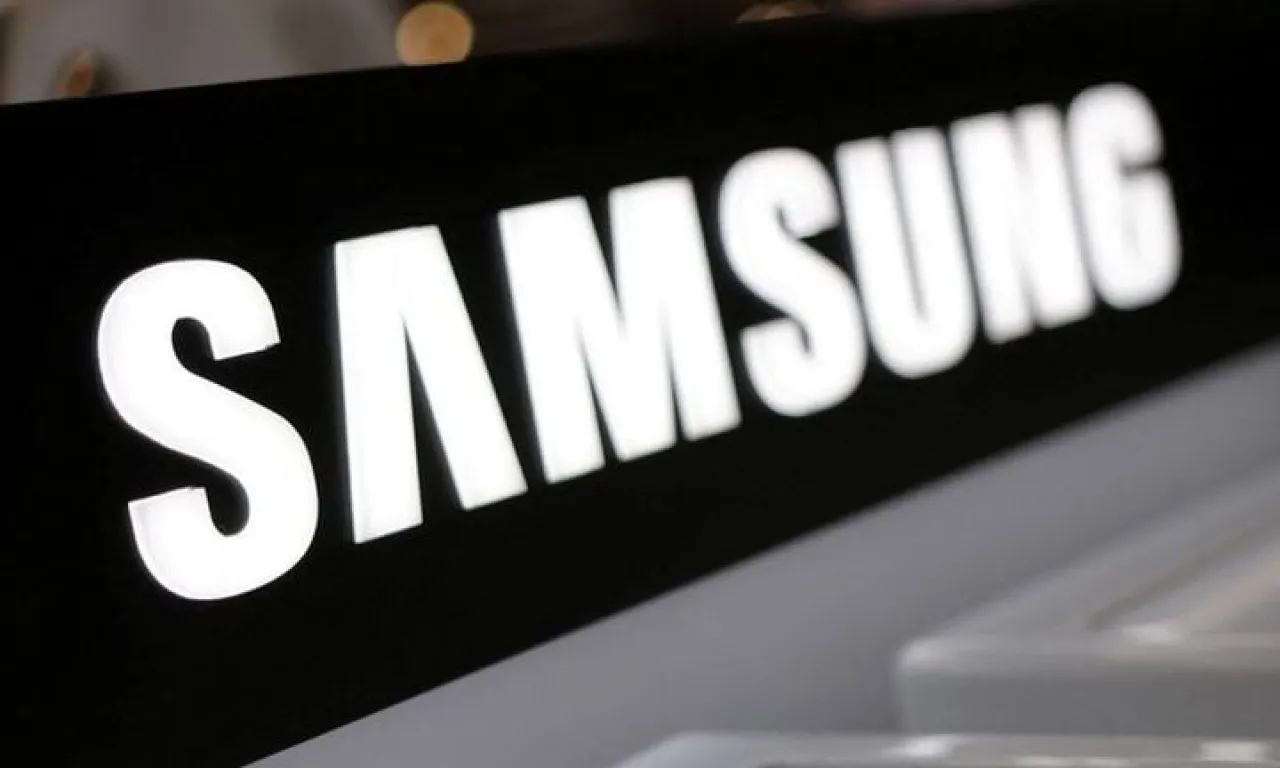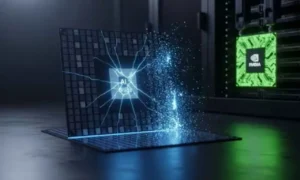Just when you thought the artificial intelligence race couldn’t get any more intense, the players on the board have made a move that could change the game forever. We’re talking about the colossal, almost sci-fi-sounding OpenAI Stargate Initiative, a project so ambitious it aims to build the computational foundation for the next generation of AI. And now, two of the world’s biggest technology titans, Samsung and SK Hynix, are officially joining the quest.
This isn’t just another partnership; it’s the formation of a super-team. According to the official statement from OpenAI, the inclusion of these South Korean giants is a critical step in securing the incredibly complex supply chain needed for this multi-year, multi-billion-dollar endeavor. But what does this actually mean? How will it impact the future of AI, and what are the essential details you need to know about the OpenAI Stargate Initiative?
Let’s break it all down. We’re going to dive deep into what this project is, why these specific companies are the chosen ones, and what this monumental collaboration means for the world.
Contents
- 1 1. What Exactly Is the OpenAI Stargate Initiative?
- 2 2. The New Power Players: Why Samsung and SK Hynix Are Essential
- 3 3. The Technical Blueprint: What Will This Supercomputer Look Like?
- 4 4. Geopolitical Shockwaves: Shifting the Global AI Balance
- 5 5. The Economic Ripple Effect: Jobs, Supply Chains, and a New Industry
- 6 6. The Challenges and Hurdles Are Monumental
- 7 7. What Does the OpenAI Stargate Initiative Mean for You?
- 8 Conclusion: The Dawn of a New Computing Era
1. What Exactly Is the OpenAI Stargate Initiative?
First things first, let’s get a handle on what we’re even talking about. The OpenAI Stargate Initiative is a long-term plan, reportedly a joint venture primarily between OpenAI and Microsoft, to build a revolutionary AI supercomputer. We’re not talking about a simple upgrade to existing data centers; we’re talking about an entirely new class of machine.
The name “Stargate” itself, likely a nod to the science fiction franchise, hints at the project’s goal: to create a gateway to a new dimension of artificial intelligence, potentially Artificial General Intelligence (AGI). It’s designed to overcome the computational bottlenecks that are currently holding back AI development.
The Unprecedented Scale and Vision
Think bigger. Then think bigger than that. Early reports have thrown around a potential price tag of over $100 billion for the OpenAI Stargate Initiative. This funding would cover everything from research and development to the physical construction of massive, specialized data centers over the next several years.
The core objective is to create an infrastructure powerful enough to run AI models that are orders of magnitude more complex than today’s GPT-4. These future models will require an astronomical amount of processing power and memory, and the Stargate project is being designed from the ground up to provide exactly that.
2. The New Power Players: Why Samsung and SK Hynix Are Essential
Bringing in Samsung and SK Hynix isn’t just about adding more money to the pot. It’s a strategic masterstroke. To build a supercomputer of this magnitude, you need the absolute best hardware in the world, and these two companies are at the pinnacle of the semiconductor industry.
Samsung’s Multi-Faceted Role: The Foundry and Memory Powerhouse
When you think of Samsung, you might think of your smartphone or TV. But their real power lies in their semiconductor division. Samsung is one of the only companies in the world that operates leading-edge semiconductor foundries, which are the factories that physically manufacture the most advanced computer chips.
For the OpenAI Stargate Initiative, Samsung’s role will likely be twofold:
- Chip Manufacturing: They can produce the custom-designed AI accelerator chips that will be the brains of the Stargate supercomputer.
- Advanced Memory: Samsung is also a leader in producing high-performance memory, like DDR5 and GDDR6, which are critical for feeding data to the processors at lightning speed.
Their involvement ensures that the OpenAI Stargate Initiative has a direct line to one of the most critical and often bottlenecked parts of the tech supply chain.
SK Hynix’s Secret Weapon: The Kings of HBM
SK Hynix brings a different, but equally crucial, specialty to the table: High-Bandwidth Memory (HBM). If you’ve been following the AI hardware space, you know that HBM is the gold standard for AI applications. It involves stacking memory chips vertically to create a “cube” that offers incredibly high data transfer rates.
Modern AI models, like those that power ChatGPT, are memory-hungry beasts. The speed at which you can move data in and out of the processor is just as important as the processor’s speed itself. SK Hynix is the undisputed leader in HBM3 and future-generation HBM technology. Their expertise is absolutely non-negotiable for a project like the OpenAI Stargate Initiative.
By bringing SK Hynix into the fold, OpenAI and Microsoft are securing the most critical memory component needed to prevent their supercomputer from starving for data.
3. The Technical Blueprint: What Will This Supercomputer Look Like?
While the exact specifications are a closely guarded secret, we can infer the key components based on the players involved and the project’s goals. The OpenAI Stargate Initiative isn’t just about cramming more GPUs into a warehouse; it’s a holistic rethinking of data center architecture.
Next-Generation AI Accelerators
The heart of Stargate will be custom-built AI chips. While NVIDIA’s GPUs currently dominate the AI landscape, this initiative will likely involve developing bespoke silicon specifically tailored for OpenAI’s future models. This could be a collaboration between Microsoft, OpenAI, and a foundry partner like Samsung to create chips that are more efficient and powerful for their specific needs.
Unprecedented Memory Architecture
With SK Hynix on board, expect an architecture that leverages HBM memory on a scale never seen before. This will allow the supercomputer to handle unimaginably large datasets and AI models with trillions of parameters, far surpassing the capabilities of current systems. The integration of this memory will be key to the success of the OpenAI Stargate Initiative.
Read Also: OpenAI’s Sora App: 5 Essential Secrets to Swapping AI Video Cameos with Friends
Advanced Power and Cooling Solutions
A machine of this power will generate an immense amount of heat and consume a staggering amount of electricity—potentially multiple gigawatts, enough to power a large city. A significant portion of the project’s budget and engineering effort will be dedicated to developing novel cooling systems and securing sustainable energy sources. This is one of the biggest hurdles the OpenAI Stargate Initiative must overcome.
4. Geopolitical Shockwaves: Shifting the Global AI Balance
This move is as much about geopolitics as it is about technology. The formation of this consortium sends a clear message to the world about American leadership in the field of artificial intelligence.
By bringing in South Korean allies Samsung and SK Hynix, the United States is solidifying a democratic, West-aligned supply chain for the most critical technology of the 21st century. This collaboration can be seen as a direct response to China’s ambitions in AI and semiconductors.
The OpenAI Stargate Initiative aims to create a technological advantage that is years, if not a decade, ahead of any competitor. This ensures that the development of the most powerful AI systems remains within a framework of companies and countries that share similar values regarding openness and safety. This strategic alignment is a core, though often unstated, goal of the initiative.
5. The Economic Ripple Effect: Jobs, Supply Chains, and a New Industry
A project costing over $100 billion doesn’t just happen in a vacuum. The economic impact of the OpenAI Stargate Initiative will be massive and will ripple through countless sectors of the economy.
High-Skilled Job Creation
Building and operating Stargate will require an army of highly skilled engineers, data scientists, construction workers, and technicians. This will create thousands of high-paying jobs, primarily in the United States where the supercomputer will likely be located.
A Supercharged Supply Chain
The demand for components will be enormous. This benefits not only the primary partners like Samsung and SK Hynix but also hundreds of other smaller companies that supply everything from networking equipment and fiber optics to cooling systems and power infrastructure. It will effectively create a new, dedicated supply chain focused on building hyperscale AI systems. The scale of the OpenAI Stargate Initiative will push manufacturing and logistics capabilities to their limits.
6. The Challenges and Hurdles Are Monumental
While the vision is inspiring, let’s be realistic: the path to making Stargate a reality is filled with incredible challenges. This is a high-risk, high-reward venture.
The Astronomical Cost and Funding
Securing over $100 billion in funding is a monumental task, even for behemoths like Microsoft. The project will be broken down into phases, but the financial commitment is staggering. Any delays or cost overruns could put the entire OpenAI Stargate Initiative at risk.
Uncharted Engineering Territory
Many of the technologies required for Stargate don’t exist yet, at least not at the scale required. The teams will be pushing the boundaries of physics, materials science, and computer engineering. From designing chips that don’t melt to building a power grid that can support them, the number of “unknown unknowns” is huge. This is truly an engineering moonshot.
The Energy and Environmental Question
One of the most significant points of debate surrounding the OpenAI Stargate Initiative is its environmental impact. The project’s massive energy consumption is a serious concern. The consortium will face immense pressure to power Stargate with renewable energy sources, which adds another layer of complexity and cost to an already mind-bogglingly complex project. Balancing immense computational needs with environmental responsibility is a challenge that must be addressed head-on. According to OpenAI’s statement, sustainability is a key consideration, but the practical implementation remains a colossal task.
7. What Does the OpenAI Stargate Initiative Mean for You?
So, a bunch of mega-corporations are building a supercomputer. Why should you care? The impact of this project, if successful, will eventually trickle down and affect everyone.
For Everyday Technology Users
The models developed using Stargate could lead to AI assistants that are vastly more capable, intelligent, and context-aware than anything we have today. Imagine AI that can help with complex scientific research, offer personalized education, or create entertainment experiences that are indistinguishable from reality. The OpenAI Stargate Initiative is the engine that could power that future.
For Developers and Businesses
For the tech community, Stargate represents the platform on which the next generation of applications and services will be built. Access to models trained on this supercomputer could enable startups and businesses to solve problems that are currently unsolvable. From drug discovery and materials science to financial modeling and climate change simulation, the possibilities are nearly limitless. It will be the ultimate sandbox for innovation.
Conclusion: The Dawn of a New Computing Era
The inclusion of Samsung and SK Hynix in the OpenAI Stargate Initiative is far more than a simple business deal. It’s the assembly of a dream team to build a machine that could unlock the next chapter of human innovation. This project represents a bold, audacious bet on the future of artificial intelligence.
This collaboration, as outlined in OpenAI’s official communication, underscores a fundamental truth about modern technological progress: no single company can do it alone. Building the future requires a global alliance of specialists, from software pioneers like OpenAI and cloud experts like Microsoft to the hardware titans at Samsung and SK Hynix.
The road ahead is long and fraught with challenges—financial, technical, and ethical. But if the OpenAI Stargate Initiative succeeds, it won’t just be a win for the companies involved. It will be a gateway to a new era of discovery and a foundational piece of infrastructure that will shape our world for decades to come. The journey has just begun, and you can be sure the whole world will be watching.




